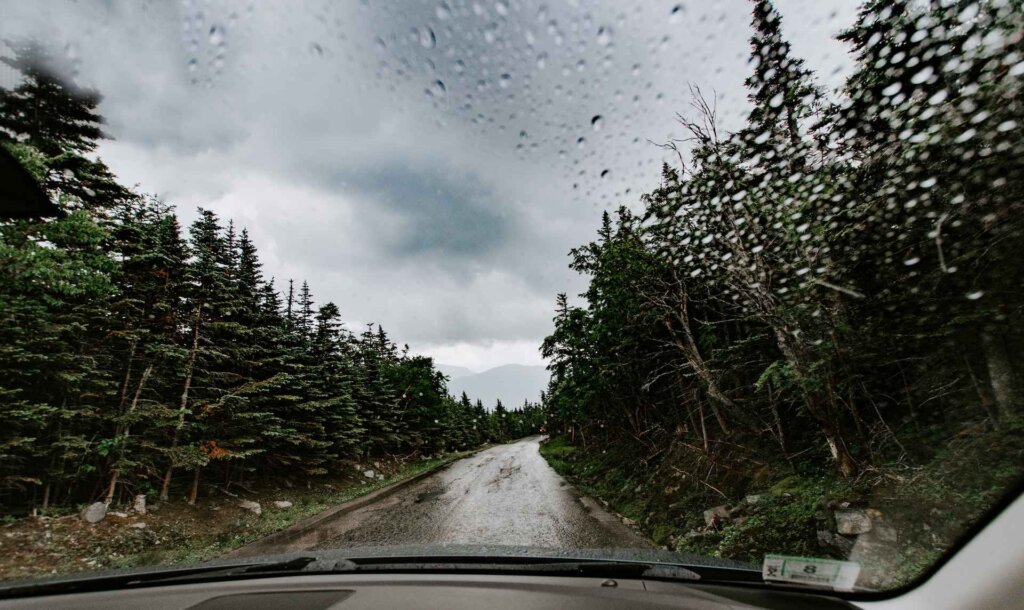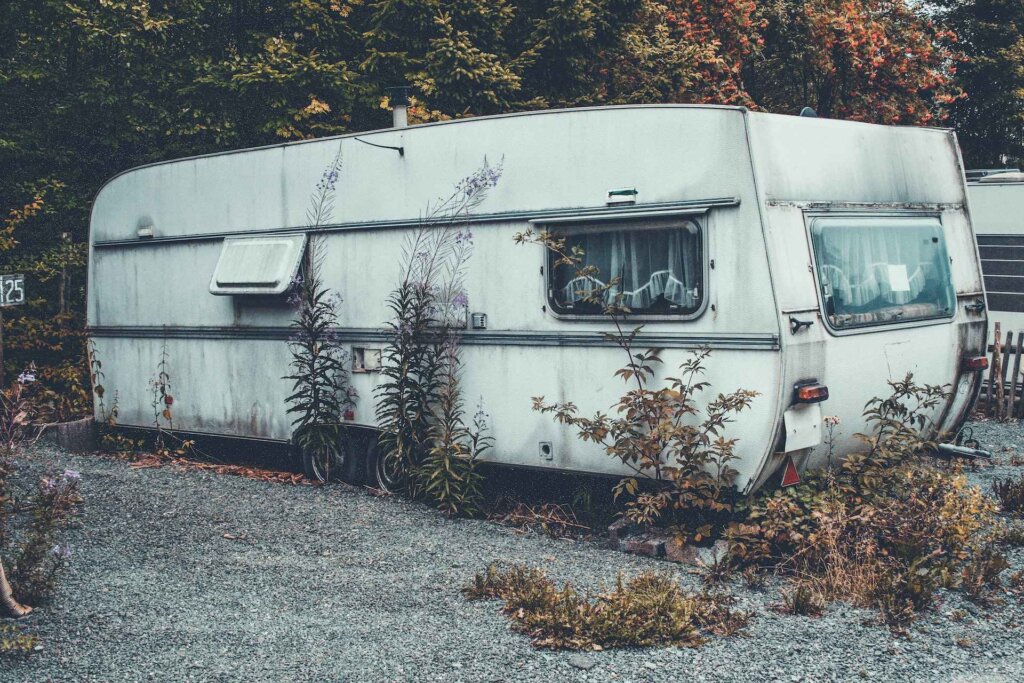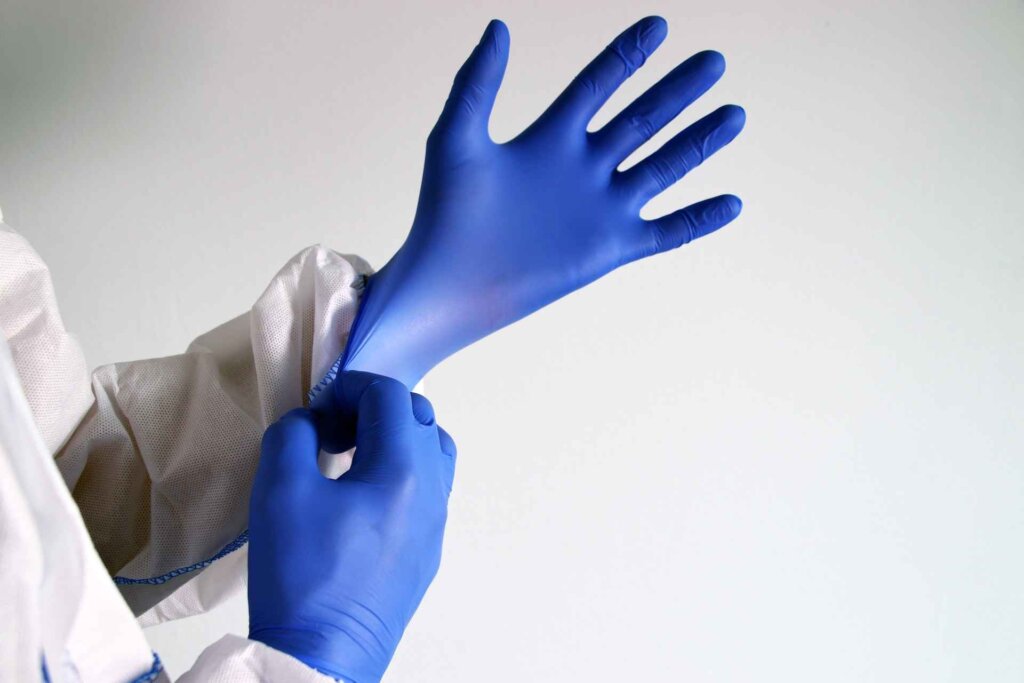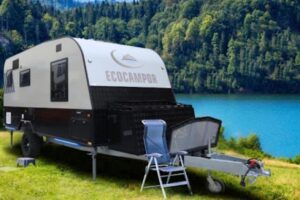So then, what’s so special about fiberglass?
Fiberglass checks many boxes that RV manufacturers need from any material. In addition to being extremely durable and having a superb weight-to-strength ratio, the processes used to build with fiberglass can result in a fully waterproof product. This is pretty essential when you make vehicles designed to keep people dry and cozy.
But, despite its reputation for strength and durability, even fiberglass needs maintenance to keep its longevity, vitality, and beauty.
Keeping a fiberglass RV roof in good working condition requires regular care and preventative maintenance. Spending the time and money to maintain your RV roof is the best (and cheapest!) way to protect your investment and ensure you have a comfortable and dry home-away-from-home for years to come.
Fiberglass RV roofs
Having lived in a fiberglass truck camper through various periods of my life, I can speak directly to the benefits of having a fiberglass roof on a camper. For a variety of reasons, fiberglass is my -and many other RVers- material of choice for RV roofs and bodies.
Here are the top benefits of having a fiberglass RV roof.
Waterproof
RV roof materials such as rubber, aluminum, and plastic are constructed by securing multiple pieces together with adhesives or fasteners. While temporarily sturdy and reliable, these construction methods lead to leaks and failures after years of use.
Many fiberglass roofs on the other hand, are constructed by putting wet base materials into forms and molds and waiting for the materials to harden, or “set”. This results in a product that is one solid piece, without unnecessary seams or cracks. Let me tell you, there’s nothing quite like waiting out a vicious rainstorm in an RV with 100% confidence that the roof is leak proof.

Durable
The composite materials used in fiberglass manufacturing are shockingly durable. When combined with reinforcement fibers (the “fiber” in “fiberglass”) these composites are elevated to a tier of durability not found in many materials on this planet.
Polyester, vinyl ester, and epoxy resins are the most common composites used to make fiberglass RV parts. Being non-organic and containing no metal, these composites are impervious to rot, mold, and rust. During manufacturing, these same qualities are inherited by the RV parts.
Fiberglass parts can withstand the eroding effects of time and weather for decades before showing any evidence of wear.
Strong
In addition to its ability to resist the passing of time, fiberglass is celebrated for being incredibly strong relative to its weight. Pound for pound, fiberglass is stronger than aluminum or steel.
Not a bad material of choice for an RV roof, huh?
This is especially advantageous to RVers who like to install aftermarket gear on their RV roof. With its superior strength, fiberglass RV roofs can be trusted to carry bikes, skis, kayaks, spare tires, and storage boxes.
Common fiberglass roof issues
While pretty incredible, even fiberglass isn’t totally invincible and will eventually run into problems. Here are some of the most common issues that RV owners find themselves dealing with:
- Cracking: Over time, cracks and fissures can appear in a fiberglass roof. These failures typically occur in high-use areas such as sections of the roof that are frequently walked on or anywhere a piece of gear is mounted. When cracks form in an RV roof, they allow water into the interior of the RV’s ceiling and walls, often leading to mold and rot.
- UV damage: The exteriors of RVs are regularly subject to harsh conditions. Dust, debris, moisture, and insects can wreak havoc on the outside of a rig, damaging exterior finishes and scuffing parts. On fiberglass RV roofs, ultraviolet (UV) sun rays deteriorate a protective gel coating that is applied to the outside of fiberglass parts during the manufacturing process. With the strength of the gel coat diminished, paint and other finishes on the fiberglass can fade and wear away.
- Delamination: Depending upon the exact manufacturing processes, a fiberglass roof has the potential to delaminate. The term “delamination” is used when the outermost layer of fiberglass separates from the internal core of the fiberglass part. Once delaminated, an RV roof is extremely susceptible to damage from precipitation and critters.

RV roof maintenance
A little preventative maintenance goes a long way.
Stay on top of performing these tasks regularly to protect your RV’s roof from damage and degradation.
Cleaning fiberglass roofs
More than anything else, keeping an RV roof clean will keep it healthy and whole. Tree sap, insects, dirt, dust, and salt that is used to de-ice roads can all accumulate on a fiberglass roof and act to slowly eat away at the protective gel coat.
When this happens, it is primarily a combination of salt and UV rays that eat at the gel coat, with the other foreign materials acting to bind the salt to the rig.
Veteran RVers suggest using blue Dawn dish soap and a soft bristled brush or sponge to wash fiberglass RV roofs. Dish soap successfully washes away unwanted build-up and the sponge acts to gently cleanse the roof without damaging the gel coating.
Sealing leaks and holes
Regular inspections for cracking, leaks, and holes will keep you one step ahead of water damage in your RV. Once a hole forms, it will immediately allow as much water as possible into your rig.
That’s the thing about water, it always finds a way.
Using a sturdy ladder, climb onto the RV roof and begin to inspect all seams and penetrations you can find. This includes roof vents, skylights, solar panel mounts; anything that could allow water into the rig if the seals fail.
A benefit to keeping your camper’s roof clean is that it is much easier to find compromised sealant and caulking when it isn’t covered in foreign gunk. A clean roof holds no secrets.
If you think it is necessary, a leak-test can be performed on a rig to test its ability to keep out water. To perform a leak test you need a hose, a camper, and two people.
After closing all windows, doors, and openings on the camper, one person stands outside of the rig with the hose and gives it a full soaking. Inside of the RV, the second person carefully watches for any signs of water leaking into the rig. Windows, skylights, and roof vents are frequently culprits of roof leaks.
Safety precautions
Extra caution must be taken any time the roof of an RV is being cleaned, repaired, or inspected. Most camper roofs are at least eight to nine feet off of the ground. Falling off of an RV roof could easily result in serious, permanent injury.
Keep the following safety tips in mind as you clean and maintain the fiberglass roof of your RV.
Precautions for you
Never work on the roof of an RV using an old, weak, or short ladder. Any ladder used for RV maintenance needs to be heavy duty, strong, ultra-stable, and taller than the rig itself. Using a short or weak ladder is simply inviting disaster, don’t do it.
Beware of wet RV roofs, as they tend to be extremely slippery. Wear grippy shoes when walking on an RV roof and try to minimize all walking as much as possible. Do as much maintenance as you can from the ladder, or on your hands and knees.
Gloves, safety goggles, and a protective face mask should be worn anytime that cleaning chemicals are being used.

Precautions for the rig
Avoid directly blasting seams, cracks, and holes with hoses and pressure washers. Spraying seams and cracks can destroy seals and force water into spaces it normally wouldn’t be able to reach. Pressure washers also have the potential to chip old coats of paint and gel coats when the nozzle is positioned too close to the body of the RV.
When walking on the roof, never stand on any vent covers, windows, or wide, unsupported expanses of roof. Try to keep your footsteps on sections of roof that are sturdy and inflexible.
Only use gentle cleaners, or cleaning solutions specially formulated for cleaning and protecting RVs. Other chemical cleaners have the potential to damage the exterior of an RV.
RV fiberglass roof repair
To seal small holes and repair caulk, I suggest using an exterior, UV-resistant silicone caulk. Apply carefully, making sure to use tape and paper to mask any area you want to protect from the caulk. Wet caulk can be cleaned from an RV’s body using 99% isopropyl alcohol and a paper towel.
PRO TIP: Buy high quality caulking and sealants for your RV. Skimping on something as cheap as caulking is an easy way to doom your RV. Online RV forums can direct you to the best products.
Holes bigger than 3/4 of an inch in diameter should be inspected and repaired by a professional RV technician.
Frequently asked questions
Take a look at these questions submitted by our readers.
How can I tell what my RV’s roof material is?
The easiest way to obtain this information is by consulting the RV’s user manual. If this yields no answers, head to the website of the RV manufacturer and snoop around for product descriptions. Other than that, you may just have to figure it out by feel.
Can I redo my RV’s fiberglass roof coating?
Yes! In fact, redoing the coating on your RV roof every few years is an excellent way to stay on top of RV roof maintenance. Many RVers opt for Dicor’s Fiberglass Roof Coating when working on their roof.
Conclusion
Consistent maintenance on motorhomes, travel trailers, and truck campers is the easiest way to ensure that one of your favorite toys and biggest investments stays whole and sound for years to come. As with any home, damage to a roof must be prioritized and dealt with immediately.
Remember to not skimp on quality cleaning products, parts, or materials. This tip is especially important to remember, as it is always tempting to save a dollar or two while at the hardware store.
If you own a nice RV but spend years fixing it with subpar products, eventually you will own a subpar RV.
Happy camping, friends!



